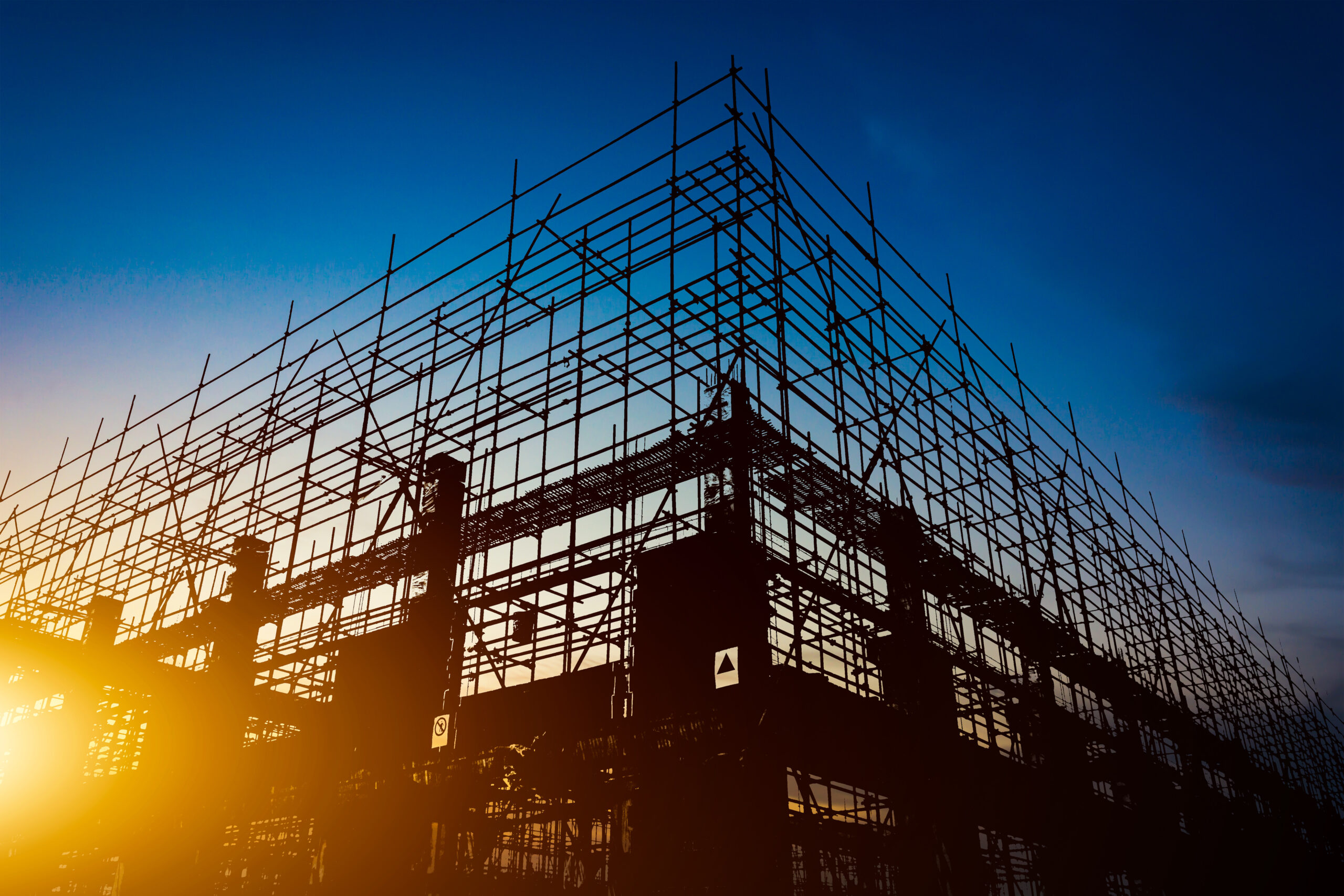Introduction
The foundation of a building is its most critical component, providing stability, strength, and durability. It transfers the weight of the structure to the ground, ensuring it remains secure and resistant to environmental forces. Choosing the right foundation is essential, as it directly impacts the building’s safety and longevity.
There are two main types of foundations: shallow foundations and deep foundations. Shallow foundations, such as strip foundations and raft foundations, are commonly used in residential and commercial buildings where the surface soil has a good load-bearing capacity. On the other hand, deep foundations, including piled foundations and drilled shafts, are required when the soil is weak, and stronger support is necessary for high-rise buildings or structures in challenging environments.
The selection of foundation types in construction depends on factors like soil testing, structural load, and environmental conditions. A well-designed construction foundation ensures the stability and integrity of a building for years to come. In this blog, we will explore different types of building foundations, their characteristics, and their specific uses to help you understand their importance in construction.
Importance of Foundations in Buildings
A strong construction foundation is essential for ensuring the stability and durability of any structure. It serves as the base that transfers the building load to the ground, preventing settlement, cracks, or structural failure. A well-designed foundation enhances safety by distributing weight evenly and protecting the structure from environmental conditions such as earthquakes, floods, and soil movement. Without proper foundation selection, a building can develop severe issues over time, leading to costly repairs or potential collapse.
Several factors influence the choice of foundation types in construction, with soil type being one of the most crucial. Soil testing helps determine whether a shallow or deep foundation is required based on its load-bearing capacity. The size, weight, and height of the structure also play a role, as high-rise buildings need stronger support. Environmental factors like groundwater levels and seismic activity must be considered to ensure long-term structural integrity.
Types of Shallow Foundations
Shallow foundations
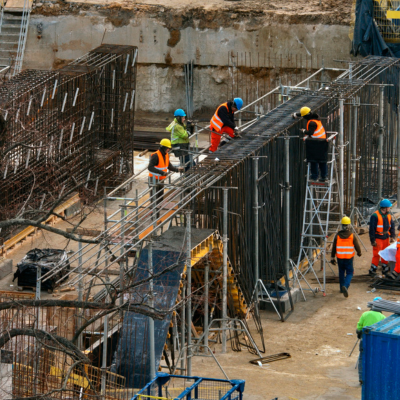
Shallow foundations are used when the surface soil has sufficient load-bearing capacity to support a structure. These construction foundations are cost-effective and ideal for residential and commercial buildings with stable soil conditions. They help distribute the building load over a wider area, reducing soil pressure and preventing uneven settlement. The main shallow foundation types include strip, raft, pad, and mat foundations.
Strip Foundation
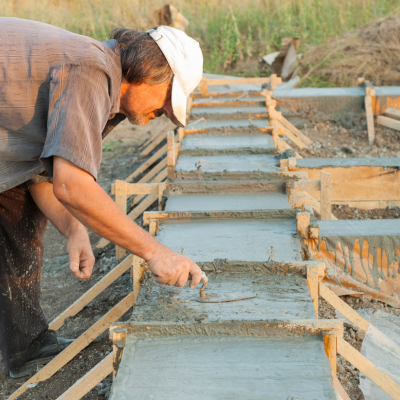
Strip Foundation also known as wall footing, this foundation supports load-bearing walls by evenly transferring the building load to the soil. It is commonly used in small residential and commercial buildings where soil type is stable. Strip foundations are a cost-effective foundation solution that prevents settlement issues by distributing the weight over a larger surface.
Raft Foundation
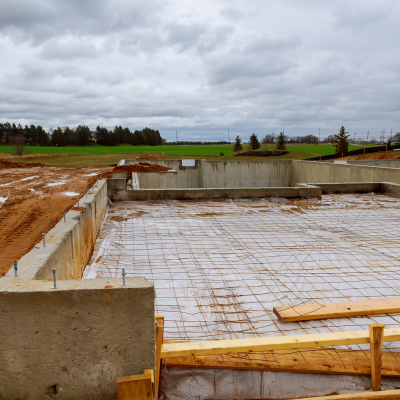
Raft Foundation also called a mat foundation, this type covers the entire building footprint, ensuring uniform load distribution. It is ideal for weak or expansive soil conditions, as it minimises differential settlement. Raft foundations are often used for large commercial buildings where foundation selection must account for heavy structural loads.
Pad Foundation
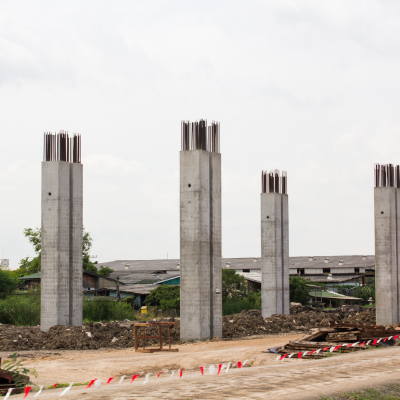
Pad Foundation this foundation supports individual columns by transferring concentrated loads to the ground. It is suitable for lightweight structures with good soil-bearing capacity. Pad foundations are commonly used in foundation types in construction where a deep foundation is unnecessary, making them a cost-effective solution.
Mat Foundation
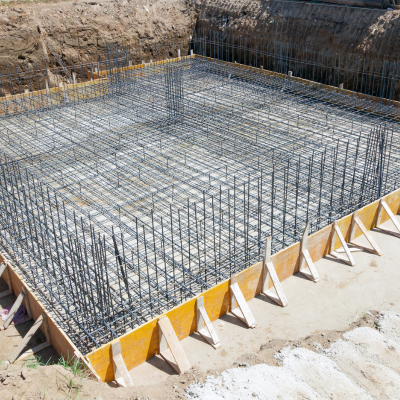
Mat Foundation reinforced concrete slab that supports multiple columns and walls, providing structural stability. It is ideal for buildings with low soil-bearing capacity, preventing differential settlement. Mat foundations are often used in areas with fluctuating groundwater levels, making them a reliable choice for different construction foundation types.
Types of Deep Foundations
Deep foundations
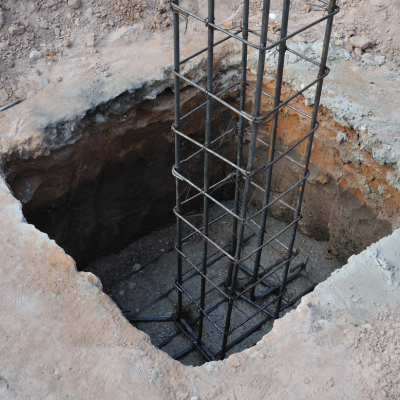
Deep Foundations are used when the surface soil lacks sufficient strength to support a structure. They transfer the building load to deeper, stable soil layers or bedrock, ensuring structural stability. These foundations are essential for high-rise buildings, bridges, and heavy infrastructure projects where shallow foundations cannot provide adequate support. The main deep foundation types include pile, pier, and caisson foundations.
Pile Foundation

Pile Foundation this foundation consists of long, slender columns driven deep into the ground to reach stable soil or bedrock. It is ideal for areas with weak soil conditions or high water tables. Pile foundations distribute structural loads efficiently and are commonly used in high-rise buildings, bridges, and offshore structures.
Pier Foundation
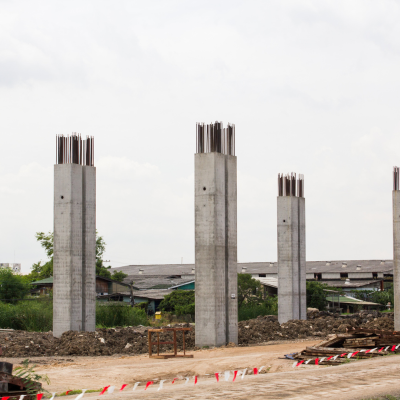
Pier Foundation large cylindrical supports drilled deep into the soil to hold heavy structures. Pier foundations are suitable for buildings where soil testing indicates weak upper layers but stronger ground at deeper levels. They provide excellent load-bearing capacity and are often used in industrial and commercial foundation selection.
Caisson Foundation
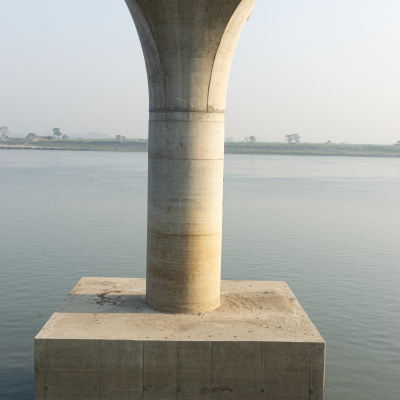
Caisson Foundation a watertight foundation structure sunk into the ground or waterbeds to provide strong support. Caisson foundations are used for bridges, piers, and offshore construction projects where underwater stability is required. This foundation type prevents water infiltration and offers high load-bearing capacity in challenging environments.
Key Factors to Consider in Foundation Selection
Soil Type & Load-Bearing Capacity
The type of soil and its load-bearing capacity determine whether a shallow or deep foundation is needed. Strong, stable soil can support shallow foundations like strip or pad foundations, while weak or loose soil may require deep foundations such as piles or caissons to ensure stability. Conducting soil testing helps determine the most suitable foundation type.
Building Load & Height
The weight and height of a structure impact the choice of foundation. High-rise buildings and heavy structures need deep foundations like pile or caisson foundations to distribute the load effectively. In contrast, smaller buildings with lighter loads can rely on shallow foundations, which provide adequate support while being more cost-effective and easier to construct.
Environmental Conditions
Groundwater levels, seismic activity, and climate conditions significantly affect foundation stability. In flood-prone or earthquake-prone areas, deep foundations are often necessary to provide additional support and prevent shifting or settlement. Proper site analysis helps in selecting a foundation that can withstand environmental challenges and ensure the long-term durability of the structure.
Cost & Construction Time
Cost and time constraints influence foundation choice. Shallow foundations are generally more affordable and quicker to construct, making them suitable for small to medium-sized projects. Deep foundations, while expensive and time-consuming, are necessary for large buildings or structures in areas with poor soil conditions. Balancing cost with structural needs is key to an efficient foundation selection.
Comparison for Residential and Commercial Buildings
Residential Buildings
Residential structures generally use shallow foundations such as strip or pad foundations, as they are suitable for lighter loads and stable soil conditions. These foundations are cost-effective, easy to construct, and widely used for single-family homes and low-rise buildings. They help distribute the building’s weight evenly, preventing excessive soil settlement. Since most residential areas have predictable soil conditions, shallow foundations provide adequate support while maintaining affordability and efficiency. Their simple design also speeds up construction, making them an ideal choice for residential projects.
Commercial Buildings
Commercial structures require deep foundations like pile or caisson foundations to support heavier loads and taller buildings. These foundations transfer weight to deeper, stable soil layers or bedrock, ensuring greater strength and durability. Large-scale commercial projects, such as office buildings, shopping centres, and industrial facilities, demand strong foundations to withstand environmental conditions and long-term operational needs. Since commercial structures often have higher structural loads and complex designs, deep foundations offer the necessary stability to prevent settlement, structural failures, and foundation shifts over time.
Conclusion
Choosing the right foundation is essential for ensuring the stability and longevity of any structure. There are two main types of foundations: shallow foundations like strip, raft, pad, and mat foundations, which are suitable for light to moderate loads, and deep foundations such as pile, pier, and caisson foundations, which provide support for heavy structures in weak soil conditions.
The selection of a construction foundation depends on various factors, including soil type, building load, height, and environmental conditions. Residential buildings often use shallow foundations due to their cost-effectiveness, while commercial buildings require deep foundations for greater load-bearing capacity. Proper soil testing and site analysis are crucial in determining the most suitable foundation type. By choosing the right foundation, structures can withstand environmental challenges, prevent settlement issues, and ensure long-term durability. Investing in a well-planned foundation is key to a safe and stable building.

